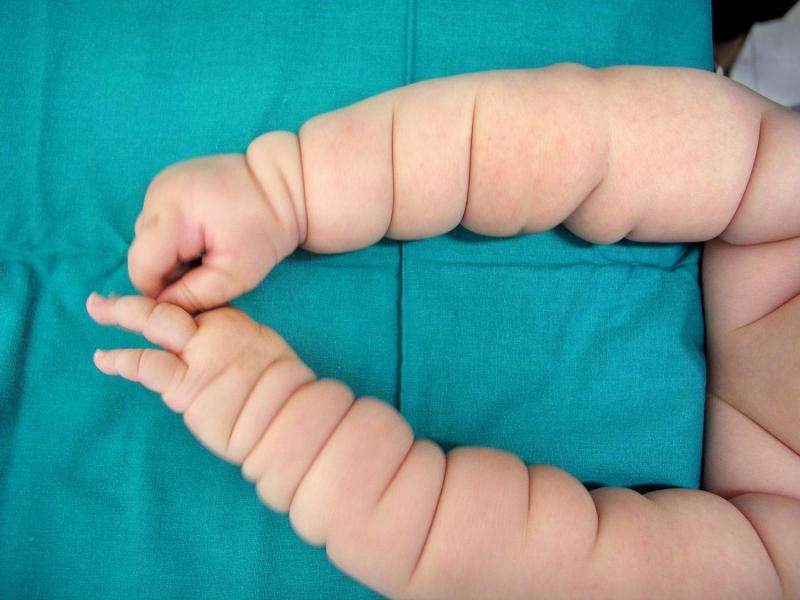Two genes linked to intellectual disability and circular skin creases on limbs

Clinical geneticists from KU Leuven, Belgium, have identified two genes that cause the rare congenital syndrome known as circumferential skin creases Kunze type.
In the 1960s, the unfortunate term 'Michelin-tire-baby syndrome' was introduced to describe babies with circular skin creases in their arms and legs. "These skin creases of the limbs are the most visible characteristic of the congenital disease that is now known as circumferential skin creases Kunze type", explains Professor Hilde Van Esch from the KU Leuven Department of Human Genetics. "The skin creases disappear naturally over time, but affected children also exhibit intellectual disability, short stature, and dysmorphic facial features such as a cleft palate."
With less than a dozen cases reported worldwide, the syndrome is extremely rare. "It was quite a challenge, but we managed to find eight unrelated patients. By analysing samples of their DNA, we were able to identify two genes that underlie the syndrome: MAPRE2 and TUBB. Both genes contain the production code for proteins that are part of microtubules, tube-shaped protein structures that make up the skeleton of the cell. These structures are essential for processes such as cell division and migration, particularly during embryonal development. Additional biochemical and cellular experiments, conducted in collaboration with David Keays from the Institute of Molecular Pathology in Vienna and Professor Cowan from the NYU Langone Medical Center confirmed that the mutant proteins affected microtubule dynamics."
"Furthermore, when we deactivated MAPRE2 in a zebrafish model, the branchial arches did not properly develop. In a certain developmental stage, human embryos have branchial arches that shape the structure of the face. In patients with the Kunze syndrome, the right cells don't reach the branchial arches in time, which may explain the patients' facial features. Further research should help explain the origin of the skin creases and the intellectual disability. This research is already in progress."
The study "Mutations in either TUBB or EB2 cause circumferential skin creases Kunze type" was published in The American Journal of Human Genetics.
More information: Mala Isrie et al. Mutations in Either TUBB or MAPRE2 Cause Circumferential Skin Creases Kunze Type, The American Journal of Human Genetics (2015). DOI: 10.1016/j.ajhg.2015.10.014
















